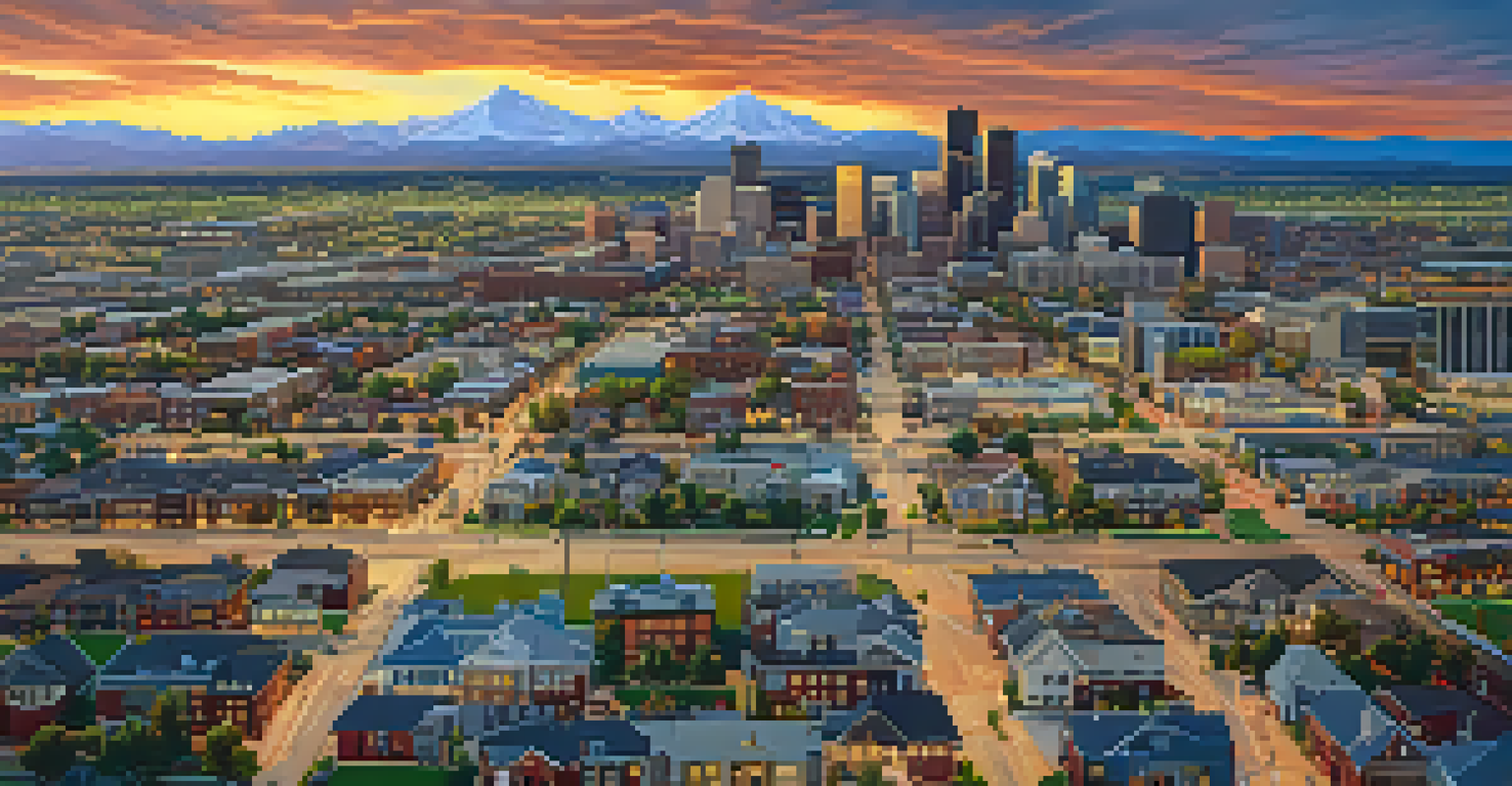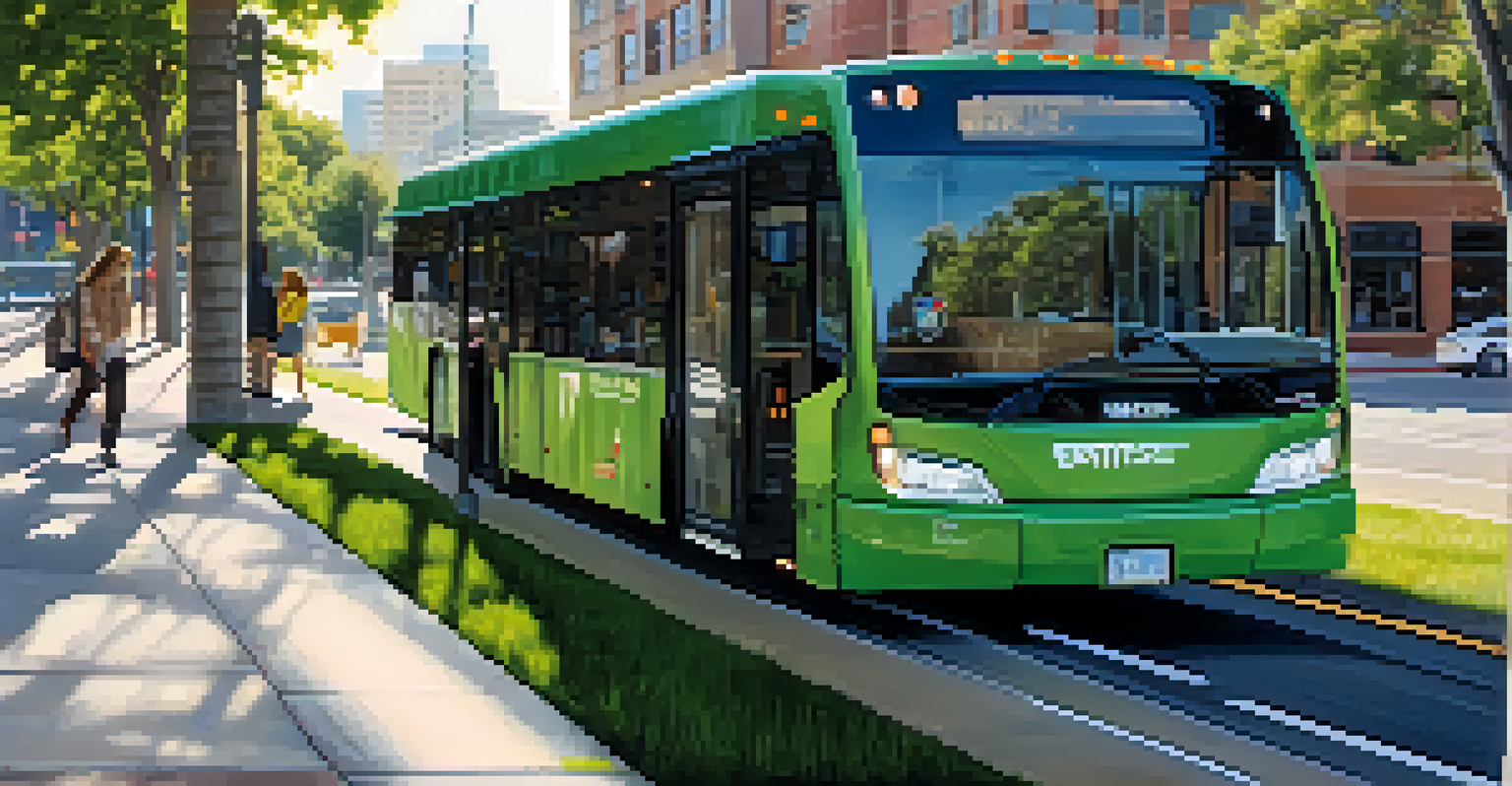The Role of Public Transport in Denver's Urban Development

Introduction: Understanding Denver's Urban Landscape
Denver, a city known for its stunning views of the Rocky Mountains, has experienced significant urban growth in recent decades. As the population swells, the need for effective public transport becomes increasingly crucial. This article delves into how public transport plays a vital role in shaping Denver's urban development.
Public transportation is a vital part of urban development, connecting communities and fostering economic growth.
With more residents choosing to live in urban areas, the demand for convenient and accessible transport options has skyrocketed. Public transport not only facilitates daily commutes but also influences where people choose to live, work, and play. Understanding this relationship is key to grasping Denver's evolving landscape.
In the following sections, we will explore various aspects of public transport in Denver, including its historical context, current systems, economic impacts, and future developments that promise to further enhance urban life.
A Brief History of Public Transport in Denver
Public transport in Denver has roots dating back to the late 19th century, with horse-drawn streetcars being one of the first modes of public transport. As the city expanded, so did the transport options, evolving from streetcars to electric trolleys and eventually to the light rail systems we see today. Each phase of development was closely tied to the city's growth and urbanization.

In the mid-20th century, the rise of the automobile led to a decline in public transport usage, as more people opted for the convenience of personal vehicles. However, the late 20th and early 21st centuries saw a revival in interest for public transport as cities recognized the need for sustainable growth. Denver's commitment to enhancing its public transport system reflects a broader trend seen in urban areas across the nation.
Public Transport Fuels Denver's Growth
Public transport is crucial for Denver's economic vitality by connecting residents to jobs and stimulating local development.
Today, the Regional Transportation District (RTD) manages a comprehensive system that includes buses, light rail, and commuter trains, connecting different neighborhoods and facilitating economic activity throughout the region.
Public Transport: A Catalyst for Economic Growth
Public transport significantly contributes to Denver's economy by providing residents with access to jobs, education, and essential services. By connecting diverse neighborhoods to employment hubs, public transport helps stimulate local economies and encourages business growth. For instance, areas near light rail stations often experience a surge in development, including retail and housing projects.
The best way to get around a city is not by car but by public transit, where the journey can be just as important as the destination.
Moreover, efficient public transport reduces traffic congestion, which can be a major economic hindrance. When more people utilize public transport, it frees up road space and lowers the costs associated with traffic delays. This, in turn, can enhance productivity for businesses and individuals alike.
As Denver continues to grow, the symbiotic relationship between public transport and economic vitality will only become more pronounced, highlighting the importance of investing in robust transport infrastructure.
Environmental Benefits of Public Transport in Denver
One of the most significant advantages of public transport is its positive impact on the environment. By providing an alternative to personal vehicles, public transport helps reduce greenhouse gas emissions and lowers the overall carbon footprint of the city. This is particularly important for Denver, as the city grapples with air quality issues due to its high altitude and urban sprawl.
Transportation is one of the largest sources of pollution in urban areas, so enhancing public transport options can lead to cleaner air and healthier communities. Denver's investment in electric buses and energy-efficient rail systems exemplifies its commitment to sustainability. These initiatives not only improve air quality but also promote a greener image for the city.
Sustainable Solutions for a Cleaner City
Investing in public transport reduces greenhouse gas emissions, helping Denver tackle air quality challenges.
As residents become more environmentally conscious, the appeal of public transport continues to grow, paving the way for a more sustainable urban future.
Social Equity and Public Transport Accessibility
Public transport plays a crucial role in promoting social equity by providing mobility options for all residents, regardless of income level. In Denver, many low-income individuals rely on public transport to access essential services, such as healthcare, education, and employment. As such, ensuring that public transport is accessible and affordable becomes a matter of social justice.
The RTD has made strides in improving accessibility for people with disabilities, with features such as low-floor buses and accessible train stations. However, there is still work to be done to ensure that every resident can easily navigate the city’s transport network. Addressing these gaps is essential for creating an inclusive urban environment.
By prioritizing equitable access to public transport, Denver can foster a sense of community and ensure that all residents have the opportunity to thrive.
The Future of Public Transport in Denver
Looking ahead, Denver's public transport system is poised for exciting developments. With planned expansions of the light rail network and the introduction of new bus rapid transit lines, the city aims to enhance connectivity and meet the growing demand for public transport. These improvements are crucial as Denver continues to attract new residents and businesses.
Additionally, advancements in technology, such as real-time tracking apps and automated vehicles, are expected to revolutionize the way residents interact with public transport. These innovations can make commuting more efficient and user-friendly, encouraging even more people to opt for public transport over personal vehicles.
Equitable Access for All Residents
Public transport promotes social equity by providing essential mobility options for low-income individuals and those with disabilities.
As Denver embraces these changes, the future of public transport looks bright, promising to further integrate into the fabric of urban life.
Conclusion: Public Transport as a Backbone of Urban Development
In conclusion, public transport is far more than a means of getting from point A to point B; it is a fundamental driver of Denver's urban development. Its influence spans economic growth, environmental sustainability, and social equity, making it an indispensable aspect of the city's future. By investing in and improving public transport systems, Denver can continue to thrive as a vibrant urban center.
The interconnectedness of neighborhoods facilitated by public transport fosters a sense of community, allowing residents to engage with their surroundings and each other. As more people embrace public transport, the city can evolve into a more inclusive and accessible place for all.

Ultimately, the role of public transport in Denver's urban development is a testament to the power of thoughtful planning and investment in infrastructure. The journey ahead is filled with potential, and public transport will undoubtedly remain a key player in shaping the city's destiny.